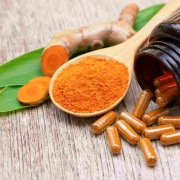Low-Dose Naltrexone: A Little Known, But Effective Treatment For Chronic Pain
Low-dose naltrexone (LDN) is often confused with naltrexone, which is a pharmaceutical medication used in doses of 50 mg or more to treat alcohol and narcotic pain pill addiction or other opiate abuse. Low-dose naltrexone is a specially compounded capsule of 1.5 to 4.5 mg of naltrexone to help the body combat chronic illness states. It must be specially made by a reliable compounding pharmacist.
LDN acts by reducing inflammation in the brain caused by over-active microglia.
Microglia are a type of glial cell of the Central Nervous System (CNS) and an important line of defense. When there is an assault on the CNS, the microglia are activated and release inflammatory substances to destroy the foreign invaders. When the assault is over, the microglia go back to their normal resting state. However, when they react too often – from repeated injury, infection, toxins, traumas, or emotional blows – they can sometimes remain hyper-active keeping the brain in a chronic state of inflammation. Research on LDN suggests that it’s able to suppress the inflammatory response of the microglia.
Some of the inflammatory conditions that have shown to benefit from LDN include fibromyalgia, multiple sclerosis, Crohn’s disease, complex regional pain syndrome, and cancer.
You can read more about inflammation of the brain and central nervous system as a major component of pain and illness in Dr. Gary Kaplan’s book Total Recovery.
LDN also improves the body’s immune system by blocking opioid receptors.
This, in turn, boosts the body’s endogenous endorphins, our natural painkillers, and important regulators of cell growth.
You can read more about low-dose naltrexone for auto-immune disorders, and other illnesses at www.lowdosenaltrexone.org.
Because low-dose naltrexone interferes with opiates you cannot continue on narcotic pain medication.
Otherwise, it has virtually no side effects and is very well tolerated by most patients. Most people notice an increase in dreaming, and some people notice a bit of sleep disruption during the initial few days of treatment but this improves over time.
Questions? Give Us a Call!
Questions about LDN? Call and speak with a nurse today. Call 703-532-4892, ext. 2.
Patient Q&A on Low Dose Naltrexone:
Q: Does the Kaplan Center offer low-dose naltrexone treatment for fibromyalgia patients? I know of a number of patients with fibromyalgia, MS, and Hashimoto’s thyroiditis who claim to have seen improvement with LDN.
A: Yes, Low-dose naltrexone is a prescribed therapy for a variety of conditions that we treat here at The Kaplan Center. If you would like to learn more about low-dose naltrexone, call the office and schedule an appointment to discuss the possible benefits for your health condition.
Q: I am allergic to NSAIDS, so would I be allergic to this?
A: Low-dose naltrexone is not an NSAID (non-steroidal anti-inflammatory), therefore any allergy to such would not apply. The higher doses of naltrexone can rarely cause liver toxicity, depression, and somnolence, but the low dose naltrexone or LDN has fewer if any side effects in our experience.
Q: The standard dose appears to be 4.5 mg in almost all the information I can find. There are a few chronic pain MDs in the U.S. that seem to be using higher doses with success — a couple say to go up as high as 10 mg while another one is using it up to 4.5 mg 3xday with great success for those who do not respond to one dose of 4.5 mg. Do you have any thoughts on this? What I’ve read is that one should not give up on this medication if not getting benefits at 4.5 mg.
A: At a low dose, the side effects are minimal. Higher doses can cause sleep disturbances and may cause elevation of liver enzymes. Although I don’t usually go higher than 4.5 mg, most likely the doses you are talking about – 10-14 mg – are far from the 50 mg or higher dose that is used to block opioid overdose, and are therefore probably safe. I don’t see any research on the efficacy of using higher doses, however.
Q: I have read that Low-Dose Naltrexone (LDN) should not be taken by people who have had organ transplants. Does this include an artificial aortic heart valve? Also, does it affect INR levels? And should Warfarin dosage need to be readjusted?
A: The short answer is that low-dose naltrexone should not be taken by someone on immunosuppressant drugs because it boosts the immune system by stimulating the body’s own endorphins. There are no known interactions with Coumadin but it is always a good idea to check the INR more often when starting a new medication. Therefore if someone has a valve replacement, yet is not on an immunosuppressant, LDN should be safe.
We are here for you, and we want to help.
Our goal is to return you to optimal health as soon as possible. To schedule an appointment please call: 703-532-4892 x2









Leave a Reply
Want to join the discussion?Feel free to contribute!